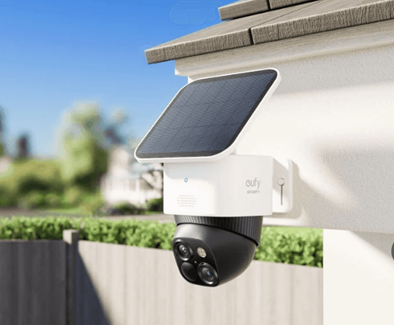‘I have been working in technology since graduating with an MSc in Applied Physics back in the 1980s – I've worked in different capacities in hardware and software design and development, business and project/programme management and industry analysis. But, it's the last eight years of working in intelligent automation – and seeing how companies are innovating with AI and bringing new products and services to market quickly, that has inspired me to write the book.’
Tell me about AI and autonomous enterprise
I believe there are possibilities for all with AI. There is much written about AI as a general purpose technology that will impact many aspects of our business and personal lives, to the same degree as the personal computer, mobile phone or the web . In business, we have seen a lot of disruption by new players. If you think of AI the way that I do, an invention that is a tool for invention and cannot be pigeonholed as ‘not for us’, then you get into it and see how it can help you get ahead of the competition. There is also the need for speed and efficiency, both of which can be boosted with AI. All of these are contributing to the creation of what I call autonomous enterprises – powered by AI.
No organisation can afford to ignore what is going on.
It's such an exciting time in technology, I believe that a guide to the bigger picture will help organisations navigate their way towards autonomous enterprises of the future. Governments need to understand the path we are on too, so that they can support their industries and build a strong skill base for the future.
How do you see intelligent automation changing work?
I believe organisational models in office-based environments will change. I discuss the ‘inside out’ model in my book. I don’t mean ‘inside out’ negatively, but as a different way of working. While the machines will do the bulk of routine transactional work, people will be there to handle more complicated or sensitive requirements. They will also activate automations to get through their own routine work, or to get guidance and advice about what they are doing, such as best answers in contact centres, or insights on real-time situations, for example glitches in logistics.

As such, the machines won’t be there just to process transactions but for personal assistance as well and with analytical insights to help with decision support. People will also design, develop, implement and monitor the automations. They will design and deploy software for new or changed requirements. They will not all be techies but subject matter or process experts.
Where can the robots step in?
I provide many examples in the book, including four real-life named case studies that show good examples of how the technology can be used. In the Royal Berkshire Hospital case study, I wrote about enhanced stroke care following the deployment of an AI powered decision support tool for analysis of CTA scan images, and some process automation. In another case study, I wrote about Siemens Global Business Services’ (GBS) bionic agent. I discuss how it was developed and deployed in-house to handle service tickets that are generated as a result of customer queries. Siemens GBS gets around 7,000,000 service tickets a year and the software is speeding up and increasing the accuracy of the processing.
Is this a positive change for customer service?
It absolutely is when done well and when customers get a timely and quality response to their queries. The Siemens GBS example is using intelligent document processing. In customer contact services we see a lot of chat-based deployments where the chatbots have not been trained well enough for what they are supposed to do. That means they have a very limited understanding of the context of the service and the intents that they are supposed to be able to handle.
In the book I have provided another case study, the one on Calderdale Council, that shows how you can set the bar high for this kind of deployment with on-going development of the chatbot vocabulary and training to provide more and better services. In the case of the council, it has built in safe-guards for sensitive requirements that get automatically routed to a human agent, for example anything to do with bereavement.
So, is the opportunity people-centric?
It can be, particularly when it comes to improving customer service. Employee engagement is becoming a priority as well in the great resignation. By freeing employees from simple repetitive tasks you give them the opportunity to do more interesting work. In addition, you can make it easier for them to do their work with desktop automation, personal virtual assistants and best answers and guides. It should be about increasing job satisfaction levels and keeping people engaged on this journey of change.
So how far off are we from having a super intelligence?
A long way off, I'm very glad to say! My book is about narrow AI that's developed to address specific requirements and nothing more. For example, the software that assists physicians to spot stroke damage in the brains of patients can only assess the damage to the front of the brain not the back. Neither can it identify other issues like tumours.
What about AI for bad?
There are reports written by computer scientists about the risks of malicious AI. We do need to address that and bring in some kind of regulatory control. The EU has already started with guidelines.









